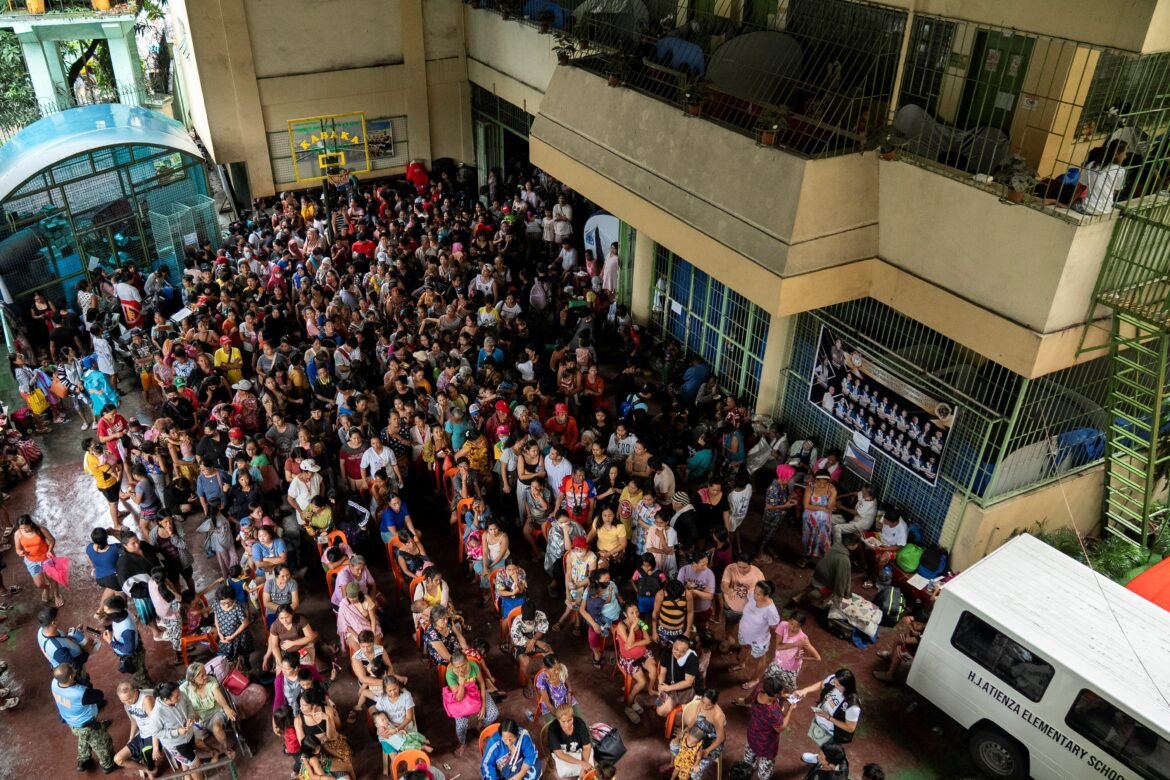Supertyphoon Fung-wong threatens Philippines; more than a million are forced to leave their homes Two people died and more than a million people were forced to leave their homes in the Philippines this Sunday (9) due to super typhoon Fung-wong. The storm began to hit the Asian country along the northwest coast and before it even made landfall, it had already caused blackouts and is expected to reach the metropolitan region of the capital Manila. The super typhoon was spotted by Philippine government meteorologists before noon (local time) this Sunday, in the city of Pandan, located in the province of Catanduanes, in the east of the country, where torrential rains and fog hampered visibility. One resident drowned in flash flooding in the eastern province of Catanduanes, and another died in the town of Catbalogan in the eastern province of Samar when she was trapped under debris, authorities said. ✅ Follow the g1 international news channel on WhatsApp The super typhoon is forecast to head northwest and hit the coast of the province of Aurora or Isabela at the end of this Sunday, or beginning of Monday (10), according to information from meteorologists. Super typhoon Fung-Wong was detected just three days after another super typhoon, Kalmaegi, which formed on the 6th and left at least 142 people dead and more than 100 missing. Philippine President Ferdinand Marcos Jr. declared a state of emergency due to the extensive devastation caused by Typhoon Kalmaegi and the calamity expected from Super Typhoon Fung-wong. Residents line up to register at an evacuation center as they prepare for Super Typhoon Fung-Wong in the capital Manila, Philippines. REUTERS/Lisa Marie David Tropical cyclones with sustained winds of 185 km/h or more are classified in the Philippines as super typhoons, a designation adopted for years to emphasize the urgency associated with more extreme weather disturbances. The Philippines is hit by around 20 typhoons and storms a year. The country is also frequently hit by earthquakes and has more than 12 active volcanoes, making the country one of the most prone to natural disasters in the world. “The rain and wind were so strong that visibility was almost zero,” Roberto Monterola, a disaster mitigation officer for Catanduanes, told The Associated Press by phone, adding that there had been no reports of casualties so far in the island province of more than 200,000 people. Despite calls for residents to evacuate areas most vulnerable to disasters caused by the super typhoon, some residents remained in their homes. “Our team rescued 14 people who were trapped on the roof of a flooded house in a low-lying neighborhood,” said Monterola. “A father also called in a panic, saying the roof of his house was about to be ripped off by the wind. We saved him, along with four relatives.” Defense Secretary Gilberto Teodoro Jr., who oversees the country’s disaster response agencies and armed forces, warned about the potentially catastrophic impact of Typhoon Fung-wong in a televised address last Saturday (8). He said the storm could affect a wide area of the country, including Cebu, the central province hit hardest by Typhoon Kalmaegi, and Metro Manila, the densely populated capital, seat of power and financial center of the country. More than 30 million people may be exposed to the risks posed by Fung-wong, according to the Office of Civil Defense. Teodoro urged people to follow authorities’ orders to immediately move away from towns and cities prone to flash floods, landslides and coastal storm surges. “We need to do this because when it’s already raining or the typhoon hits the region and the floods start, it’s difficult to rescue people,” Teodoro said. Schools closed and flights canceled Authorities in the northern provinces of the Philippines, which could also be hit by super typhoon Fung-wong, ordered the closure of schools and most government agencies on Monday (10) and Tuesday (11). At least 325 domestic and 61 international flights were canceled over the weekend and Monday, and more than 6,600 passengers and cargo workers were stranded in at least 109 ports, where the coast guard banned navigation in rough seas. Authorities warned of a “high risk of life-threatening storm surges and considerable damage” of more than 3 meters along the coast of more than 20 provinces and regions, including the capital’s metropolitan region Manila.
Source link
Supertyphoon Fung-wong leaves two dead in the Philippines and more than a million people are forced to leave their homes
30

